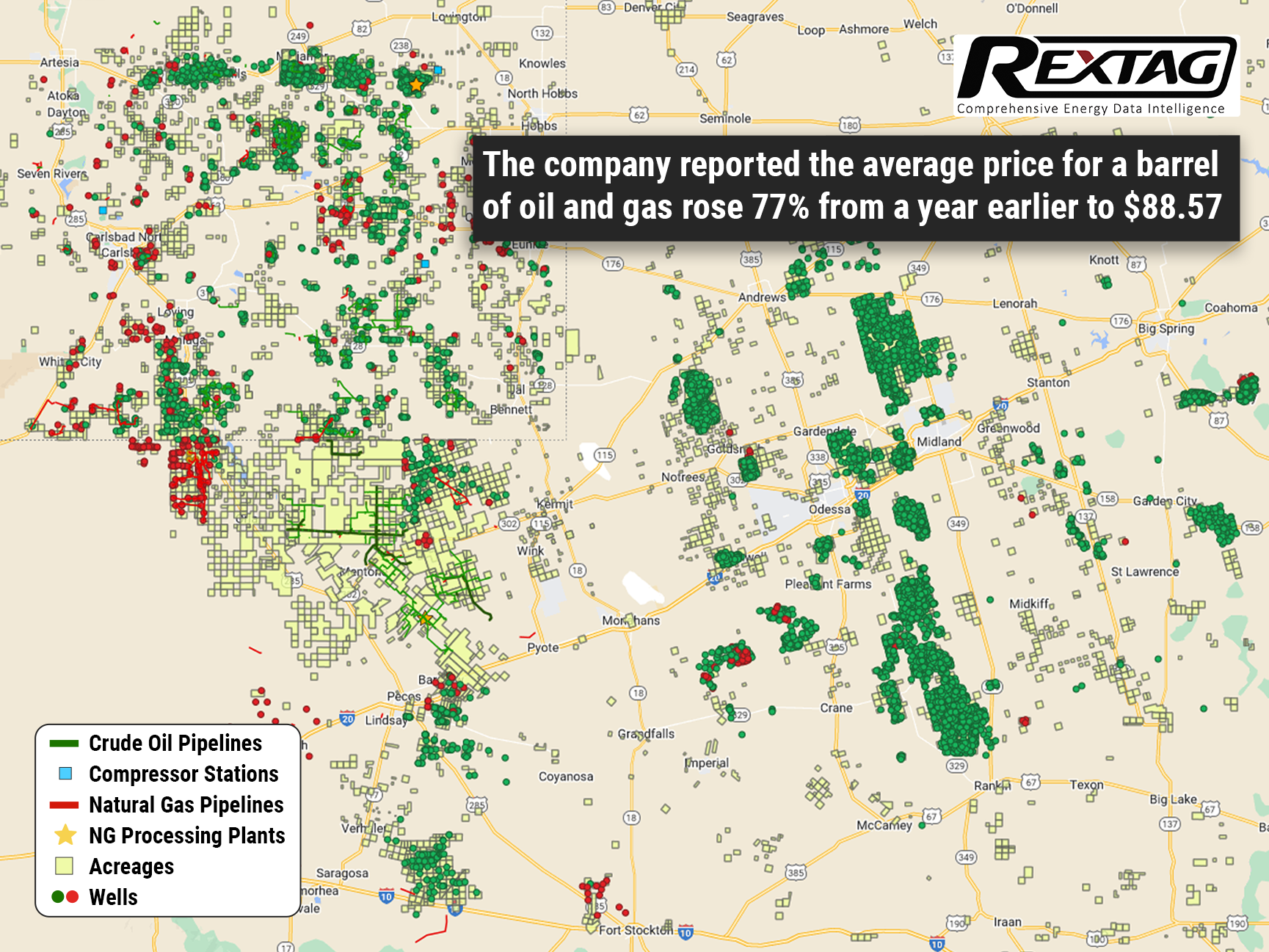Comprehensive Energy Data Intelligence
Information About Energy Companies, Their Assets, Market Deals, Industry Documents and More...
$5 Billion Returns for ConocoPhillips’ Shareholders as Prices Grow
09/20/2022
Shareholder’s payout target was increased by 50% after the largest U.S. independent oil producer surpass Wall Street’s earnings estimates on growing energy prices, said Houston-based ConocoPhillips Co. on Aug. 4.
Due to Western sanctions on major producer Russia throttling energy supply amid a rebound in demand from pandemic lows, oil and gas prices have soared. Crude has been trading more than 25% higher since the start of the year and results also benefited from high natural gas prices.
Meanwhile, shares were down a fraction, to $91.03, in early trading but are up about 26% year to date.
Its production outlook for the year was reduced by approximately 1% on disruptions to output in Libya, and ConocoPhillips said while inflation was growing its costs, the year’s capital budget would rest at around $7.8 billion.
ConocoPhillips stated, that the average price obtained for a barrel of oil and gas accelerated 77% from a year earlier to $88.57. The company acknowledges that it has not hedged any of its oil and gas sales to make the most of higher market prices.
The capacity of 1.69 million boe/d was in line with Wall Street estimates, however, the company expected the current quarter’s output would be between 1.71 million and 1.76 million boe/d.
ConocoPhillips anticipates returning $15 billion to shareholders this year by means of dividends and share buybacks, joining Chevron Corp. and others in rising payouts after years of pressure on producers to restrict spending and boost returns.
The company, which kept its spending forecast intact, insignificantly decreased its full-year capacity outlook on uncertainty in Libya. ConocoPhillips hoped that the production would be about 1.74 million boe/d for the year.
The company’s second-quarter adjusted earnings of $3.91 per share overcame Wall Street estimates of $3.80 per share, as Refintiv IBES data says.
ConocoPhillips safely transports oil and natural gas using pipelines, tankers, trucks and rail to connect energy supply to demand. The method the company chooses depends on the project, location, economics, accessibility and environmental considerations. All four methods are proven, efficient and economical ways of getting energy to market.
Working with a leading environmental, social and governance (ESG) consultancy firm the company is designing a Net-Zero Governance Framework, with the goal of identifying how to leverage and optimize our process, system, organizational and governance structure to align and drive the company along a net-zero pathway.
In its Gulf Coast business unit, a project is underway to remove the need for pneumatic-powered scavenger injection pumps at each well pad through the installation of scavenger towers at each central facility location. The project could reduce emissions by around 11,250 metric tons per year.
If you are looking for more information about energy companies, their assets, and energy deals, please, contact our sales office mapping@hartenergy.com, Tel. 619-349-4970 or SCHEDULE A DEMO to learn how Rextag can help you leverage energy data for your business.
EIA: Permian Basin Oil and Gas Output is Thought to Beat Record in June
![$data['article']['post_image_alt']](https://images2.rextag.com/public/blog/66Blog_Permian_Production_Forecasted_2Q_2022_Rextag.png)
The EIA forecasts that total output in the main U.S. shale oil basins will increase 142,000 bbl/d to 8.761 million bbl/d in June, the most since March 2020. Oil productivity in the Permian Basin in Texas and New Mexico is supposed to go up 88,000 bbl/d to a record 5.219 million bbl/d in June, as the U.S. Energy Information Administration (EIA) announced in its report on May 16. In the largest shale gas basin, the productivity in Appalachia in Pennsylvania, Ohio and West Virginia will grow up to 35.7 Bcf/d in June, its highest since beating a record 36 Bcf/d in December 2021. Gas output in the Permian Basin and the Haynesville in Texas, Louisiana and Arkansas will rise to record highs of 20 Bcf/d and 15.1 Bcf/d in June, respectively. Speaking of the Permian future output, putting hands on upcoming changes in production has recently been made easier with the new Rextag's service - Pad Activity Monitor. Thanks to satellite imagery and artificial intelligence, customers are able to monitor the oil and gas wells and are provided with near real-time activity reports related to drilling operations. However, it is noticed that productivity in the largest oil and gas basins has decreased every month since setting records of new oil well production per rig of 1,544 bbl/d in December 2020 in the Permian Basin, and new gas well production per rig of 33.3 MMcf/d in March 2021 in Appalachia.
A major U.S. shale oil producer is looking to start a land selloff in the lone star state
Pioneer Natural resources is looking to divest properties in the lone star state. According to Rextag, Pioneer’s Delaware assets on sale have a trailing 12 month production of just over 22 MBOE against a total Permian Basin production of almost 212 MBOE. (The sale, if it happens, will effectively lead to a 10% decrease of Pioneer’s asset base in terms of the previous year's production.)
![$data['article']['post_image_alt']](https://images2.rextag.com/public/blog/328_Blog_Why Are Oil Giants Backing Away from Green Energy Exxon Mobil, BP, Shell and more .jpg)
As world leaders gather at the COP29 climate summit, a surprising trend is emerging: some of the biggest oil companies are scaling back their renewable energy efforts. Why? The answer is simple—profits. Fossil fuels deliver higher returns than renewables, reshaping priorities across the energy industry.
![$data['article']['post_image_alt']](https://images2.rextag.com/public/blog/327_Blog_Oil Market Outlook A Year of Growth but Slower Than Before.jpg)
The global oil market is full of potential but also fraught with challenges. Demand and production are climbing to impressive levels, yet prices remain surprisingly low. What’s driving these mixed signals, and what role does the U.S. play?
![$data['article']['post_image_alt']](https://images2.rextag.com/public/blog/326_Blog_USA Estimated Annual Rail CO2 Emissions 2035.jpg)
Shell overturned a landmark court order demanding it cut emissions by nearly half. Is this a victory for Big Oil or just a delay in the climate accountability movement?